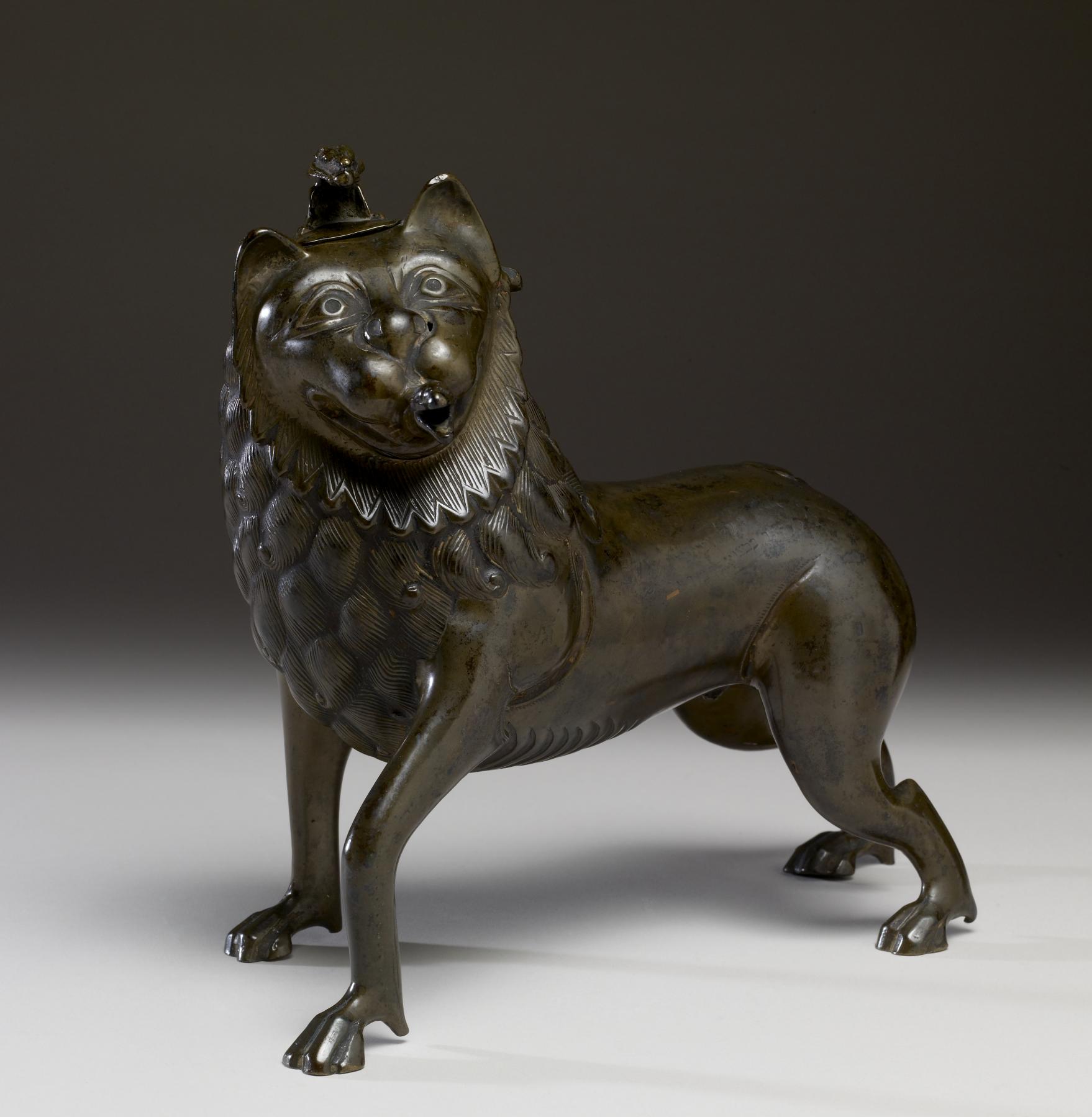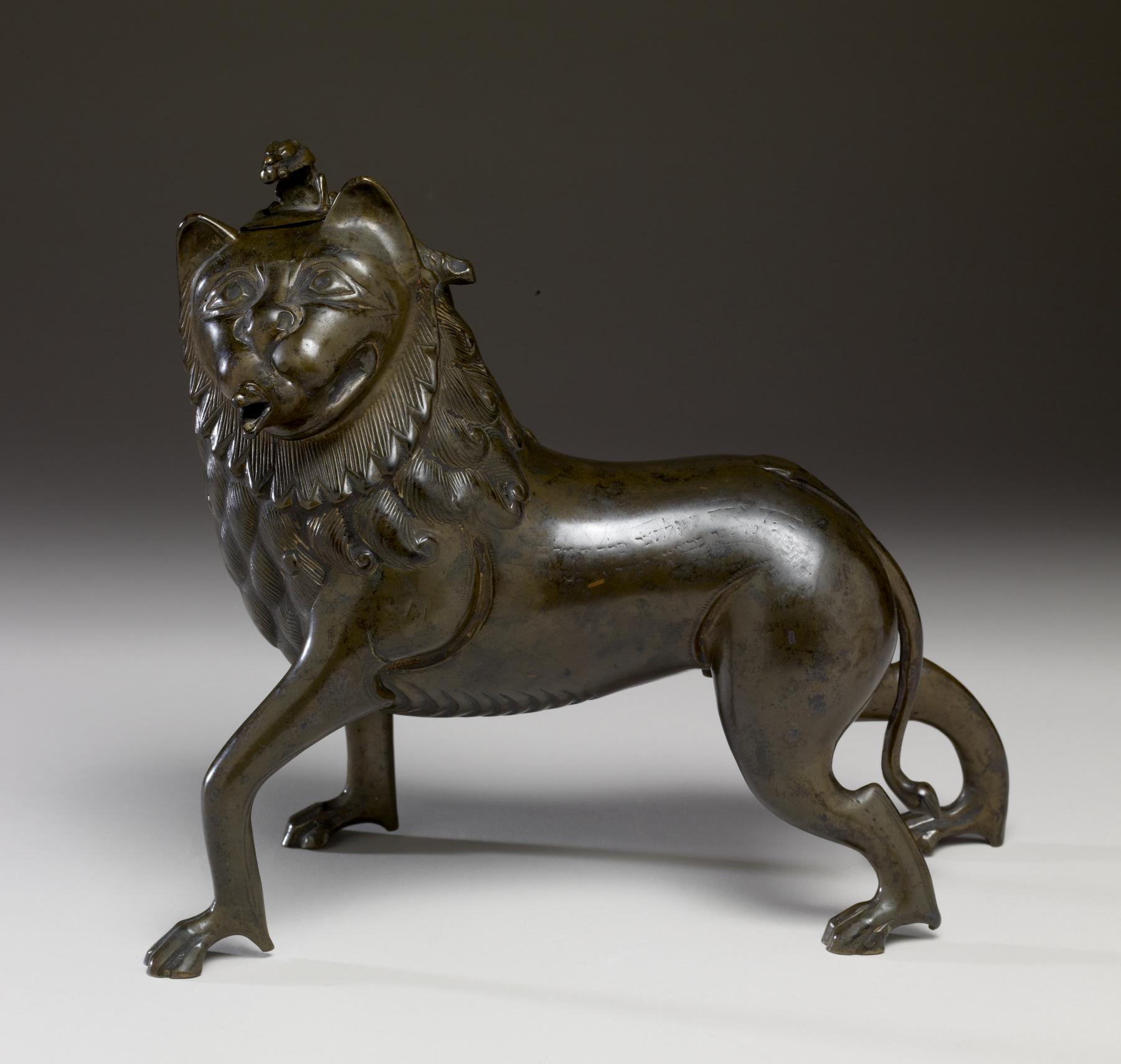Aquamanile in the Form of a Lion
(Medieval Europe )
Aquamanilia, or water pitchers, present an interesting case of intercultural exchange across great distances. This type of vessel is a small, closed water pourer, often shaped as an animal or mythological creature. The form developed in the ancient Near East, and many of the animals shown, whether real or mythical, also derive from Near Eastern prototypes: lions were particularly favored. This unusual example bears a Hebrew inscription on one side that reads, "Blessed be the King of the Universe, who has instructed us to wash our hands," indicating that it served a ceremonial function, either in a Jewish home or synagogue. Whether this inscription is original to this piece or added later, it attests to the diverse cultural communities served by the same type of object.
Inscription
Provenance
Provenance (from the French provenir, 'to come from/forth') is the chronology of the ownership, custody, or location of a historical object. Learn more about provenance at the Walters.
Stein Sale, Paris, 1899, no.139; Henri Daguerre, Paris, by purchase; Henry Walters, 1927, by purchase; Walters Art Museum, 1931, by bequest.
Exhibitions
| 2019 | The Book of Beasts: The Bestiary in the Medieval World . J. Paul Getty Museum, Los Angeles. |
| 2016 | Waste Not: The Art of Medieval Recycling. |
| 1998-2001 | Highlights from the Collection. The Walters Art Gallery, Baltimore. |
Conservation
| Date | Description | Narrative |
|---|---|---|
| 1/5/1977 | Examination | examined for loan |
Geographies
Belgium, Flanders
(Place of Origin)
Germany (Place of Origin)
Measurements
H: 9 1/8 x L: 10 5/8 x D: 5 1/16 in. (23.2 x 27 x 12.9 cm)
Credit Line
Acquired by Henry Walters, 1927
Location in Museum
Accession Number
In libraries, galleries, museums, and archives, an accession number is a unique identifier assigned to each object in the collection.
In libraries, galleries, museums, and archives, an accession number is a unique identifier assigned to each object in the collection.
53.25








